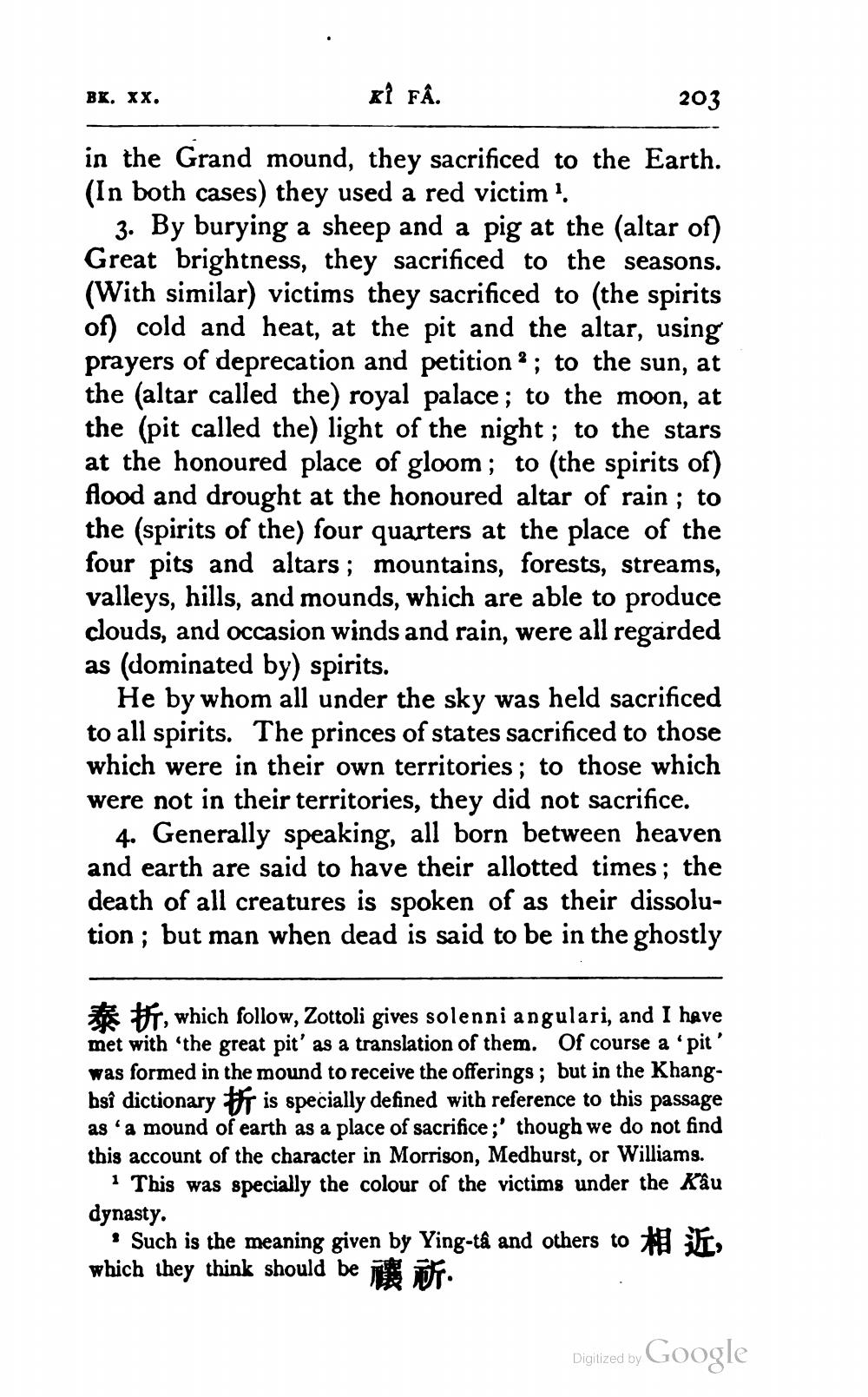________________
BK. XX.
ki FÂ.
203
in the Grand mound, they sacrificed to the Earth. (In both cases) they used a red victim
3. By burying a sheep and a pig at the (altar of) Great brightness, they sacrificed to the seasons. (With similar) victims they sacrificed to (the spirits of) cold and heat, at the pit and the altar, using prayers of deprecation and petition ? ; to the sun, at the (altar called the) royal palace; to the moon, at the (pit called the) light of the night; to the stars at the honoured place of gloom; to (the spirits of) flood and drought at the honoured altar of rain; to the (spirits of the) four quarters at the place of the four pits and altars; mountains, forests, streams, valleys, hills, and mounds, which are able to produce clouds, and occasion winds and rain, were all regarded as (dominated by) spirits.
He by whom all under the sky was held sacrificed to all spirits. The princes of states sacrificed to those which were in their own territories; to those which were not in their territories, they did not sacrifice.
4. Generally speaking, all born between heaven and earth are said to have their allotted times; the death of all creatures is spoken of as their dissolution; but man when dead is said to be in the ghostly
#r, which follow, Zottoli gives solenni angulari, and I have met with the great pit' as a translation of them. Of course a 'pit' was formed in the mound to receive the offerings; but in the Khangbsî dictionary # is specially defined with reference to this passage as 'a mound of earth as a place of sacrifice;' though we do not find this account of the character in Morrison, Medhurst, or Williams.
1 This was specially the colour of the victims under the Kâu dynasty.
Such is the meaning given by Ying-tâ and others to WIL which they think should be .
Digitized by Google




